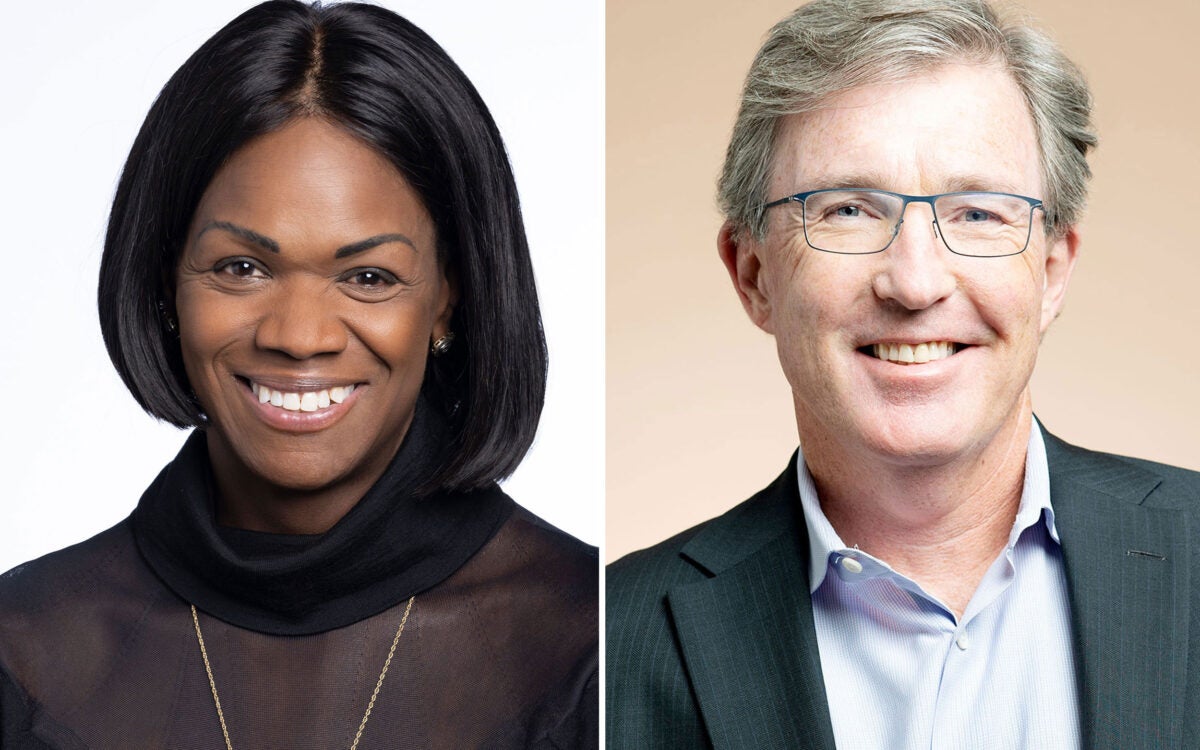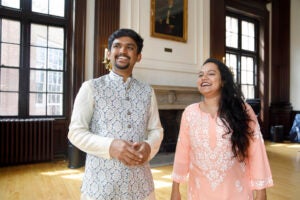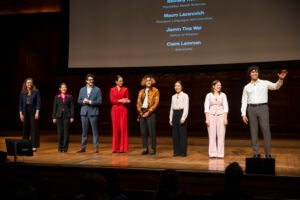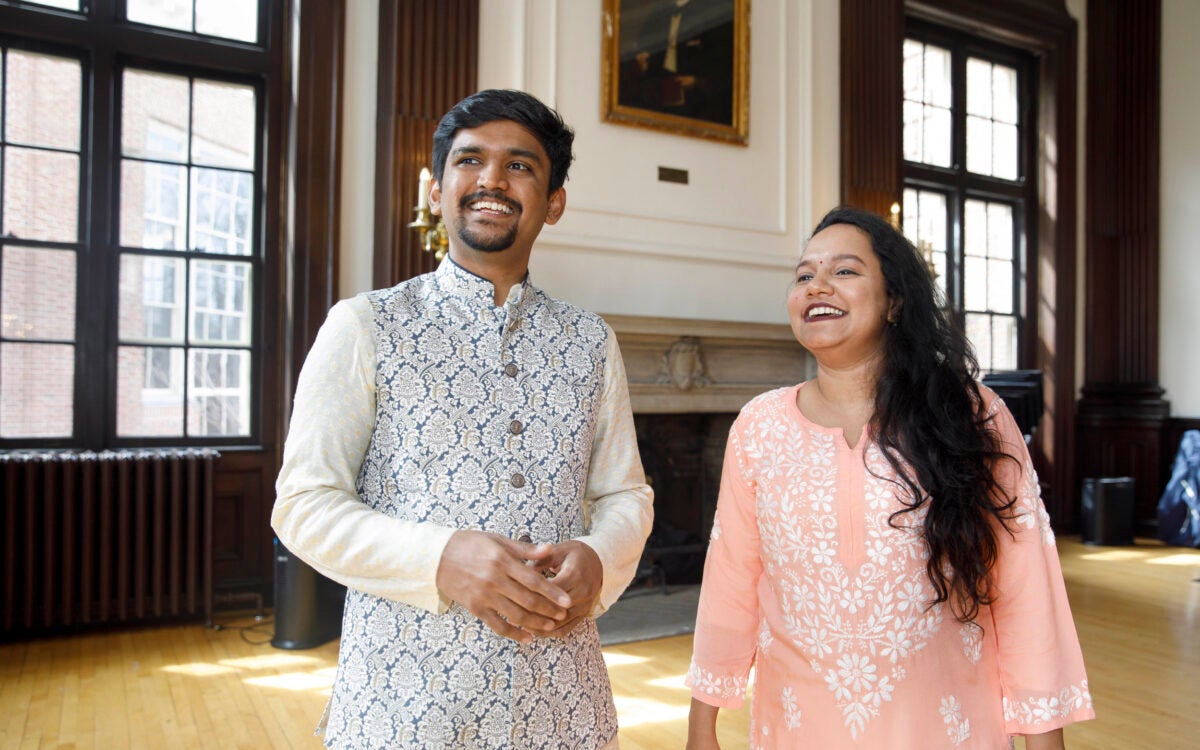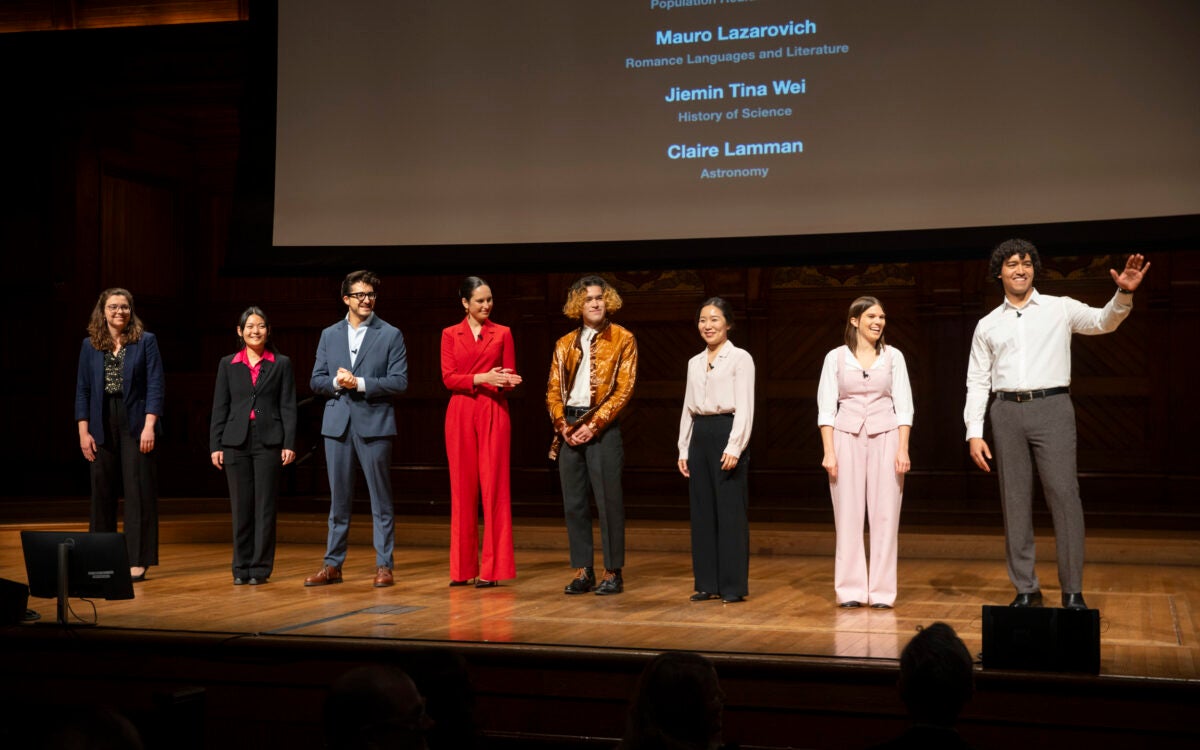Experts take on climate change
Gore, Summers, McElroy illuminate future climate pathways for globe
A panel on possible future steps to combat climate change Monday (Dec. 13) discussed embracing market-based incentives for carbon dioxide reductions and starting a new dialogue between the world’s two biggest carbon dioxide emitters – the United States and China.
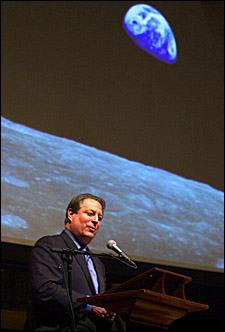
The panel discussion, featuring former Vice President Al Gore, Harvard President Lawrence H. Summers, and Gilbert Butler Professor of Environmental Studies Michael B. McElroy, served a dual purpose. It highlighted the issue of global warming and marked a transition for the sponsoring organization, the Harvard University Center for the Environment.
Though the center was created several years ago, the center’s faculty director, Professor of Earth and Planetary Sciences Daniel P. Schrag, said the event coincides with “almost a re-launch” of the center, with a move into newly renovated headquarters and an increased financial commitment from the University.
The two-hour event took place before an enthusiastic crowd at Harvard’s Sanders Theatre.
During the event, Summers spoke of the University’s role in finding a solution to global warming, saying that it is at places like Harvard – where experts in science, government, business, engineering, and other critical fields work close to each other – that solutions will be found.
Summers announced a doubling of Harvard’s Green Campus Loan Fund, out of which Harvard’s Schools can get no-interest loans to finance energy conservation and other environmentally friendly projects.
Schrag, who moderated the event, started the evening with some historical perspective on the problem. Studies of ancient air bubbles trapped in glacial ice give a picture of carbon dioxide levels in ancient atmosphere. That picture shows that CO2 levels hadn’t risen above 300 parts per million in 430,000 years, Schrag said. Today’s levels are about 380 parts per million and projections expect those levels to rise to 500 parts per million by 2060.
What effect that will have on the Earth’s climate is uncertain, Schrag said, since climate is affected by a complex interplay of ocean and air currents, ice and cloud cover, and many other factors.
“We’re performing an experiment on a planetary scale,” Schrag said.
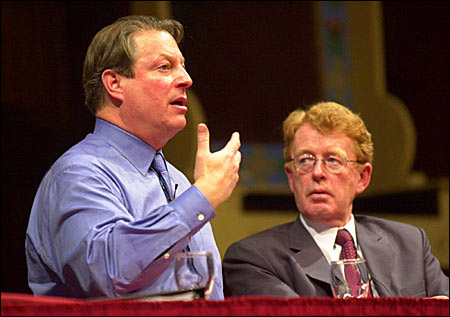
The biggest question now, Schrag said, is how to replace the billions of tons of coal that appear likely to fuel development in China and India, two populous nations that are rapidly industrializing.
Gore, who first learned about global warming while a student at Harvard in the 1960s, said he thought persuading lawmakers to act would be simple once the scientific evidence was laid out before them. He said he tried when he served in the House, the Senate, and in the White House in the 1990s, eventually getting administration support for the Kyoto Protocol, which the current administration has rejected.
Despite legislative reluctance, Gore asserted there is really little doubt that the globe is warming and that the warming is caused by human activity. From melting alpine glaciers and Antarctic ice sheets to the fact that the 10 hottest years on record occurred in the past 13 years, Gore said evidence of warming is around us.
He cited predictions of rising sea levels and pointed to the fact that London’s flood barriers have been brought into more and more frequent use and that some low-lying Pacific islands are being evacuated.
Predictions of more frequent and intense storms may also be coming true, Gore said. Gore cited the 10 typhoons that hit Japan this year, saying that the island nation has never had more than seven in a single year. The series of hurricanes that hit Florida this fall were also unprecedented, as was the hurricane that hit Brazil, the first such storm known to have made landfall there.
But Gore struck a hopeful note as well, saying that many technological challenges that once seemed insurmountable – from the discovery of a polio vaccine to landing on the moon – have been overcome.
“We have to use our deliberative processes and our democracy to talk with each other about our crisis. And it is a crisis,” Gore said.
During a question-and-answer session that followed the presentations, Gore compared the Kyoto Protocol to the Montreal Protocol in the 1980s that set initial limits on chemicals that were destroying the Earth’s ozone layer. Though that initial agreement wasn’t adequate to do the job, it was a first step that was followed by more stringent restrictions. Today, according to the U.S. Environmental Protection Agency, the levels of ozone-destroying chemicals in the atmosphere has peaked allowing the long, slow recovery of ozone levels to take place.
Summers remarked that government tends to move slowly at first on issues requiring substantial change, such as this one, and then, as consensus builds, to move much more rapidly. The problem with that final rapid movement, he said, is it doesn’t allow policy-makers to thoroughly study an issue before crafting legislation. That is the role of universities such as Harvard, Summers said – to examine all sides and come up with workable, effective alternatives.
McElroy, the former faculty director of the Center for the Environment and an expert on the environmental impact of China’s increasing use of coal, said that though the United States is the largest carbon dioxide emitter on the planet, China is in second place and closing. Given that the United States is not party to the Kyoto Protocol, McElroy said it doesn’t help to lecture the Chinese about their energy habits. Rather, the United States should lead by example and address some of our wasteful habits.
McElroy said that about half of the power we generate is used inside buildings, but that our heating, lighting, and other power uses are very wasteful. In addition, he said, transportation in the United States is also wasteful, citing the surge in the number of large sport utility vehicles on the road.
McElroy said efforts to increase the use of renewable resources, such as the wind farm proposed for Nantucket Sound, are far preferable to building more coal-fired plants, and he added that he thought that nuclear power plants had to become a larger part of the future power mix.
With the United States and China playing such prominent roles in the problem of global warming, McElroy said he’d like to see the two countries begin to work cooperatively on the issue.
Whatever the United States and China do, early efforts around the world ought to be ones that make the most economic sense, Summers said during his talk. Things like ending subsidies for cheap coal, which power a tropical flower industry in some temperate nations, should be relatively easy first steps.
Summers urged those interested in the issue to join a cooperative search for answers rather than engage in polarizing activities. He said economic incentives, such as the ability to trade carbon dioxide credits between nations, are important factors in a global plan, because it rewards those who can figure out how to reduce carbon dioxide emissions cheaply.
“The use of markets to drive efficiency is not just good economics, it is good environmental policy as well,” Summers said.
Summers encouraged an increase in funding for basic research into technological solutions that will allow the removal of excess carbon from the atmosphere, such as proposals to bury it underground or under the sea.
“The one thing that everybody should be able to agree on is the importance of basic research on clean energy use and sequestration,” Summers said.
